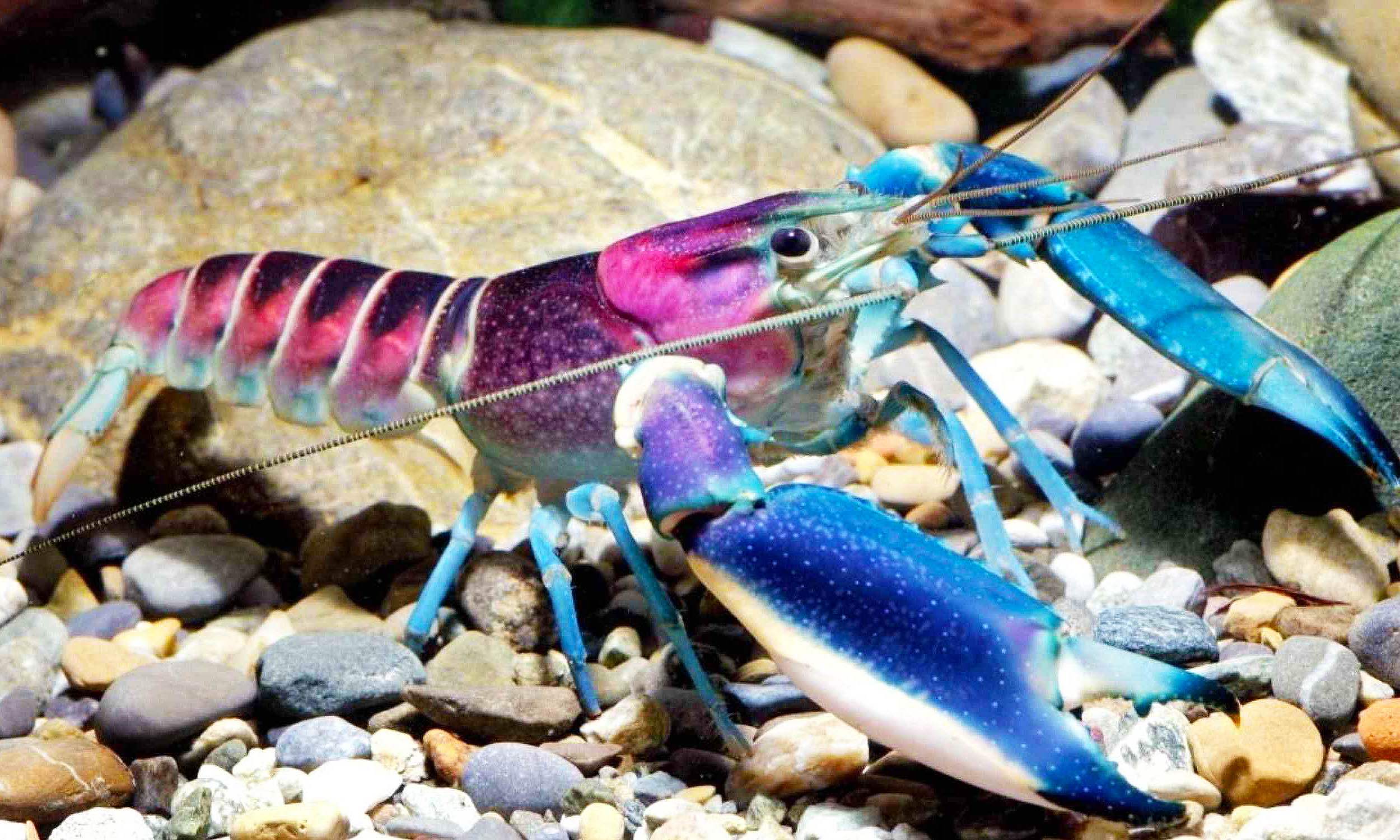A beautiful turquoise‑and‑lilac sea creature that has been kept in hobbyist aquariums around the world for nearly two decades has finally been given a scientific species name.
The modest crustacean hiding in plain sight turns out to be Cherax pulverulentus, an entirely new crayfish species no biologist had cataloged until now.
Jiří Patoka of the Czech University of Life Sciences Prague and an international team realized the oversight while inspecting a shipment of Indonesian pets in 2023.
Their detective work now ends years of speculation about the animal’s identity in the scientific community worldwide.
Meet Cherax pulverulentus
Ever since the early 2000s, importers have marketed the animal under nicknames such as “Blue Moon” and “Hoa Creek,” labels that lumped several look‑alike species together.
Dealers moved thousands of specimens across Europe, the United States, Japan, and Indonesia, yet museum drawers remained empty of an official voucher specimen.
Collectors recognized the flashy colors, but the mix of hues muddied any attempt to match the pet to known taxa. Without an authoritative description, conservation agencies could not track exports or assess wild harvest pressure.
Field notes hinted that the mystery crayfish came from forested headwaters near Ayamaru Lake in the Bird’s Head Peninsula of western New Guinea.
Border checkpoints rarely scrutinized small ornamental shipments, allowing animals to flow from creeks to storefronts without paperwork.
Cherax pulverulentus has two forms
The research team reports that purple‑form individuals sport turquoise bodies dusted with violet specks. Their joints and tail fans fade to a chalky white, producing an almost pastel appearance that appeals to aquarists.
Blue‑form animals replace those lilac freckles with a deep navy background that drifts toward black around the claws.
Bright orange stripes frame the abdomen and legs, giving the crayfish a stark, two‑tone look unique within the genus.
Patoka and colleagues chose the species epithet pulverulentus, Latin for “covered with dust,” to capture these pinpoint spots.
The name, Cherax pulverulentus, cements the animal’s singular identity and separates it from Cherax pulcher, a close relative described in 2015.
Detective work in the lab
Traditional morphometrics ranked claw shape, eye size, and rostrum length against 38 allied species. DNA barcoding of the mitochondrial COI gene then revealed at least 2 percent divergence from every known member of the genus.
“This species has been exploited in the ornamental aquarium trade at least for 21 years,” wrote Patoka in the report. That long tenure outside science underscores how commercial networks can outpace taxonomy.
A second line of evidence came from nuclear 28S sequences that grouped Cherax pulverulentus as a sister lineage to C. pulcher, yet still distinct enough to rule out color morph status.
The dual approach gives regulators a clear diagnostic toolkit should confiscated shipments require forensic identification.
New Guinea streams to aquariums
In the wild, the dusty crayfish digs shallow burrows into sandy streambeds shaded by rainforest canopy. Water temperatures hover near 75°F, oxygen levels stay high, and leaf litter offers both shelter and food.
The Bird’s Head Peninsula ranks as a biodiversity hotspot, yet many of its tributaries remain unsampled by crustacean specialists.
Local fishers collect juveniles during the dry season when water levels drop, a practice that feeds the export pipeline but leaves population trends unknown.
Little is published on the crayfish’s diet, growth rate, or breeding season. Patoka’s team calls for ecological studies that could inform sustainable quotas before demand removes more animals than nature can replace.
Dumping Cherax pulverulentus
During the survey, one dusty crayfish turned up in a thermal spring near Budapest, Hungary, evidence that at least one aquarist released an unwanted pet.
Similar introductions have seeded invasive populations of marbled crayfish and signal crayfish across Europe.
Non‑native crustaceans often carry the oomycete Aphanomyces astaci, the agent of crayfish plague, a disease lethal to indigenous European stocks. Even a handful of carriers can trigger a cascade that empties streams of native fauna.
Thermal refuges give tropical species a foothold in colder climates. Once established, escapees outcompete local detritivores, alter nutrient cycling, and nibble on amphibian eggs, multiplying their ecological footprint.
Why formal naming matters
Legal frameworks that govern wildlife trade, such as CITES, depend on precise species lists.
An unnamed organism cannot be added to an appendix, leaving customs officials powerless to intercept over‑harvested cargo.
Taxonomic clarity also guides aquaculture biosecurity. Without diagnostic characters, hatchery operators may unknowingly mix species, breeding hybrids that compromise genetic integrity in the source range.
What’s next for Cherax pulverulentus?
Patoka’s group urges Indonesian authorities to map the crayfish’s distribution and to monitor harvest volumes.
Citizen scientists photographing stream fauna with location tags could accelerate the search for hidden colonies.
Aquarists can help by buying captive‑bred stock, quarantining new arrivals, and never releasing pets into local waterways.
Responsible hobby practice will allow enthusiasts to enjoy the dusty crayfish’s colors without endangering ecosystems.
The study is published in Zootaxa.
—–
Like what you read? Subscribe to our newsletter for engaging articles, exclusive content, and the latest updates.
Check us out on EarthSnap, a free app brought to you by Eric Ralls and Earth.com.
—–
